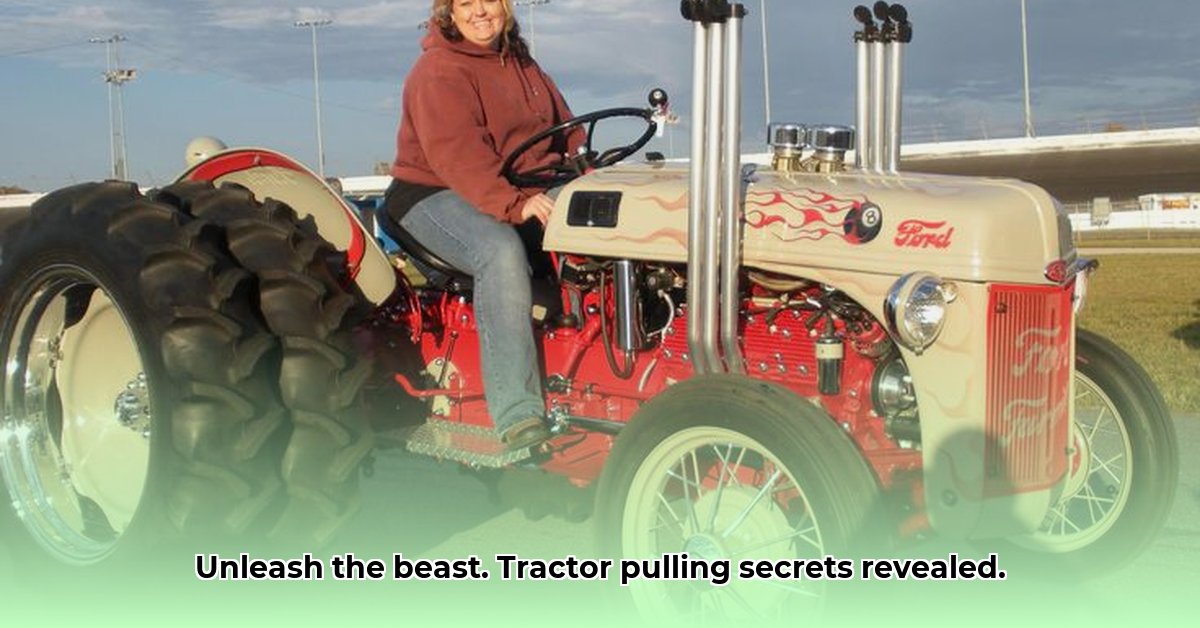
Hot rod V8 tractor pulling—a spectacle of roaring engines, massive weights, and breathtaking power—is more than just a competition; it's a thrilling display of engineering prowess and driving skill. This comprehensive guide will equip you with the knowledge to understand, build, and compete in this exciting sport. Whether you're a seasoned competitor or a curious enthusiast, this guide provides actionable insights into mastering the art of hot rod tractor pulling. For more information on vintage tractors, check out this resource.
Understanding the Rules: A Foundation for Success
The world of hot rod V8 tractor pulling isn't monolithic. Different sanctioning bodies, such as USA-EAST and Ohio Pull, operate under distinct rule sets. These variations significantly impact engine specifications, safety regulations, and allowed modifications. Understanding these differences is crucial for building a competitive tractor and avoiding disqualification.
Here's a comparative overview of key rule discrepancies:
| Feature | USA-EAST | Ohio Pull | Notes |
|---|---|---|---|
| Maximum Engine Displacement | Varies (check specific event rules) | Varies (check specific event rules) | Engine size limits are a primary differentiator between sanctioning bodies. |
| Safety Gear Requirements | Stringent (roll cage, fire suppression) | Less stringent (varies by event) | Safety regulations are crucial – prioritize safety equipment for every event. |
| Allowed Modifications | Restrictions on chassis modifications | More lenient (varies by event) | Understanding allowed modifications is key to optimizing performance legally. |
| Weight Limits | Often specified, dependent on class | Often specified, dependent on class | Weight classes determine the competitive division. |
This table highlights the variability across different competitions. Always consult the official rulebook for each event. The differences underscore the critical need for detailed research before you begin building your tractor. Failure to comply with the specific rules of your chosen competition will result in disqualification.
Building Your Hot Rod Tractor: A Technical Deep Dive
Building a competitive hot rod tractor demands meticulous planning, precise execution, and a deep understanding of engineering principles. The following steps provide a roadmap for constructing a high-performance machine. Remember to prioritize safety throughout the entire process.
1. Engine Selection: The Heart of the Beast (and the Rules): Engine selection is paramount. While sanctioning bodies dictate maximum displacement (the volume of the engine's cylinders), the specific engine choice within those limits significantly impacts performance and reliability. Consider torque (crucial for pulling power), horsepower, and the engine's ability to withstand the intense stress of competition. Reliability is just as important as raw power; a consistent performer is far superior to an unreliable powerhouse. Research widely and consult experienced engine builders for expert advice.
2. Chassis Modification: Optimizing for Traction and Control: Chassis modification goes beyond mere reinforcement; it’s about optimizing weight distribution, traction, and overall machine stability. Consider employing specialist fabricators to design and construct a chassis capable of withstanding the immense forces involved in tractor pulling. Wheelbase adjustments, weight redistribution, and strategic use of materials are crucial for maximizing performance.
3. Safety Equipment: Protection is Paramount: This is not optional; it's mandatory. Invest in a full roll cage, a high-quality fire suppression system, and comprehensive personal protective equipment (PPE). This ensures not only personal safety but also adherence to competition regulations. The safety of competitors is paramount in this high-stakes sport.
4. Essential Components: Beyond the Powerplant: High-performance tires, a robust transmission system, and a reliable cooling system are critical for sustained performance. Cutting corners on these components will negatively impact reliability and overall performance. Research and choose components that meet the demands of competitive pulling.
5. Fine-tuning and Testing: Refinement of Performance: Once built, the tractor needs rigorous testing under various conditions to identify areas for improvement and fine-tune its performance. Consistent testing will reveal strengths and weaknesses, allowing for crucial adjustments before competition.
Competition Strategies & Best Practices: Mastering the Art of Pulling
Building a powerful tractor is only half the battle. Effective strategies and expert driving techniques are essential for success.
1. Master Driving Techniques: Smooth acceleration, controlled throttle management, and precise steering are critical for maximizing performance and avoiding costly errors. Consistent practice is essential to hone these skills. Driving skill, like engineering, is refined over time.
2. Reading the Track: Track conditions significantly impact performance. Observe the track surface before your run and adjust your driving style accordingly. A mud-caked track demands completely different strategies than a dry, smooth surface.
3. Learning from the Pros: Observe experienced pullers. Analyze their techniques, identify areas for improvement, and gather insights from their experience. The wisdom of experienced competitors is a valuable resource.
The Future of Hot Rod V8 Tractor Pulling: Standardization and Safety
The future of hot rod tractor pulling involves addressing inconsistencies across sanctioning bodies. A move toward standardization in rules and safety regulations is crucial for the sport's growth and sustainability. A unified set of rules will create a more level playing field and attract more competitors. Enhanced safety protocols will further protect participants and ensure the long-term viability of the sport.
Resources and Further Reading
For detailed information on rules, regulations, and technical specifications, we highly recommend visiting the official websites of major tractor pulling organizations (links to relevant organizations). Engage with the community – online forums and local clubs are excellent resources for sharing knowledge and expertise. Remember: Continuous learning is vital for sustained success in this dynamic sport.